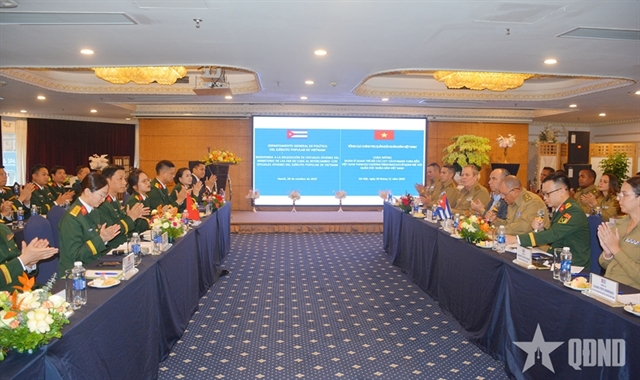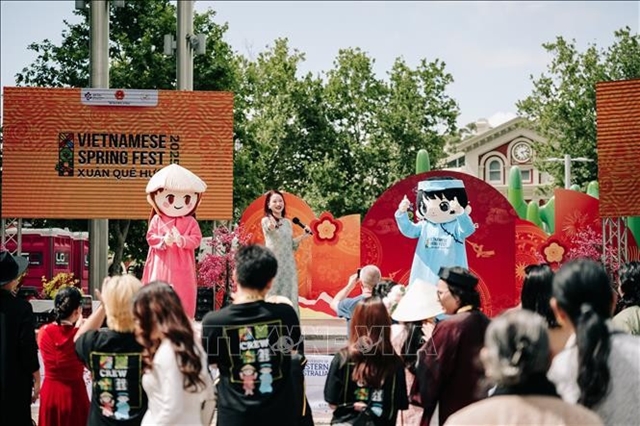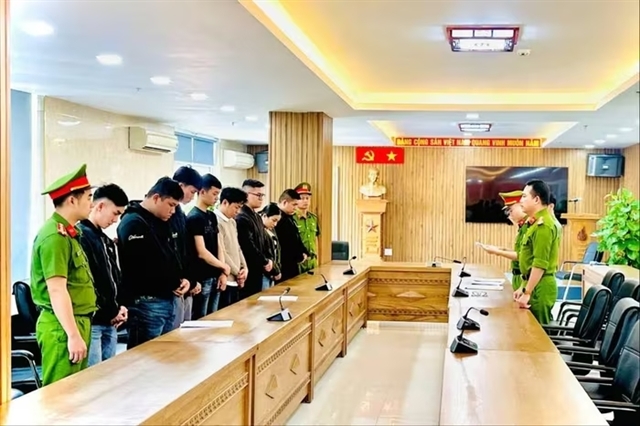 Society
Society
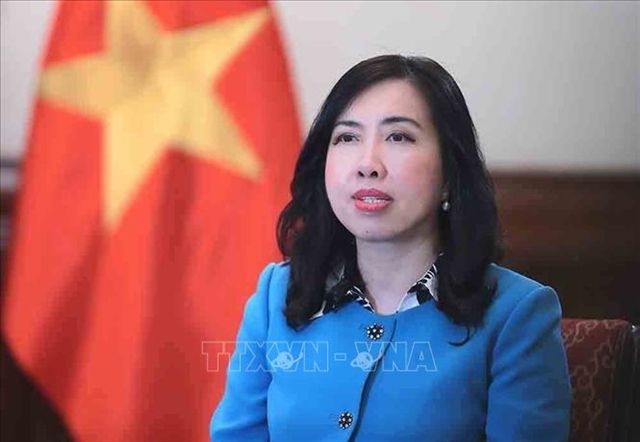
It is fairly common that women are forbidden from going near shrimp farms in several southern provinces because they are believed to bring bad luck.
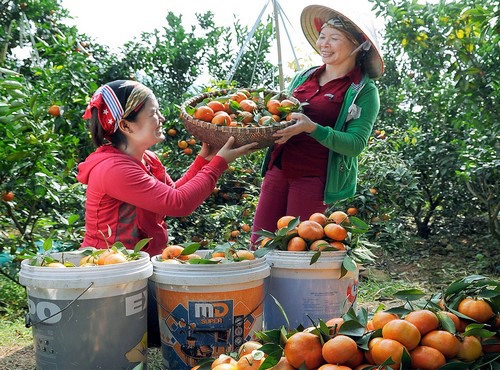 |
| Women in northern province of Bắc Giang harvest oranges they grow. More and more projects seek to empower women to participate in production and community work/ - VNA/VNS |
HÀ NỘI — It is fairly common that women are forbidden from going near shrimp farms in several southern provinces because they are believed to bring bad luck.
Rooted in this superstition is the notion that shrimp farming is a man’s job. Thus it was that Huỳnh Thị Ly, a resident of Sóc Trăng Province’s Mỹ Xuyên District, took care of household chores while her husband raised shrimps, pigs and buffalos by himself.
“The heavy workload sometimes irritated him, so we fought a lot,” Ly said.
Things started to change in 2014, when Ly and her husband started attending ‘group meetings’ within a gender equality joint-project implemented by an international community empowerment organisation and an NGO working to alleviate poverty.
“Now we discuss the business together, like what type of food should we feed the shrimp and how to clean the ponds,” Ly said. “It feels less of a burden, and we feel happier doing it together.
“My husband spends less time and money on friends’ gatherings, smoking and drinking,” she added. “He has also taught me some shrimp raising techniques.”
Gender equality has for long been stated policy in Việt Nam, but practice has never really caught up with deep-rooted prejudices and beliefs.
Experts have said that the country needs to establish strong linkages between different sectors and lawmakers to create “a gender movement” in which everyone talks about gender equality.
Projects such as the one that Huỳnh Thị Ly and her husband joined help balance the roles of wives and husbands in the allocation of domestic work, as well as empowering women to participate in production and community work.
The three year (2014-2016) project used a community-led empowerment methodology, using processes that facilitate learning and actions by men and women.
Phan Tú Quỳnh, consultant at the Centre for Community Empowerment, said the method, called GALS (Gender Action Learning System), is effective, but maintaining the gender-balanced models that these projects have built requires the involvement of local authorities.
An official from the Agricultural Extension Centre of Lào Cai Province said she’d had a “heated discussion” with officials at the provincial Department of Finance over allocating funds to expand the GALS project to all parts of the province.
Nguyễn Thị Diệu Hồng, a former official from the Ministry of Labour, Invalids and Social Affairs’ Department of Gender Equality, said that gender budgeting has been legalised in Article 9 and Article 41 of the Việt Nam Law on State’s Budget, which should be taken by international organisations and gender officials as a legal base for their projects and activities.
The organisations can also take advantage of the two National Programmes developing new rural areas and poverty alleviation to request financing from the State’s budget, she said.
“These are only two national programs in Việt Nam that are financed by the State Budget,” she said at a conference on gender equality in Hà Nội last week. “And since these projects on gender equality do help local residents make more money and improve their livelihoods, I think they should be included as parts of the (larger) programmes and get supported by the State.”
The State should get involved and take responsibility at all levels of governance to help these projects tackle gender issues, Hồng added.
She said close collaboration was very much needed between four ministries of Agricultural and Rural Development, Labour, Invalids and Social Affairs, Industry and Trade and Finance to create a network that strives for gender equality.
A recent study by the United Nation Educational, Scientific and Cultural Organisation (UNESCO) in Việt Nam found a reinforcement of gender stereotypes in grade 1-12 textbooks.
Among 8,000 human characters, only 24 per cent are women, and they were typically illustrated engaging in household chores, agricultural work, taking care of pets and trees, cooking and so on, while the male characters are portrayed as having “more important” occupations like policemen, scientists, researchers, doctors and engineers, the study found.
In her interactions with textbook writers and educational policy makers, Trần Thị Phương Nhung, director of UNESCO’s Gender Equality and Girls’ Education Initiative, found that no separation was made for boys and girls in 100 per cent of the legal documents and data issued by the Ministry of Education.
She noted: “No gender separation was made for the number of students graduating from high school, students receiving scholarships, students getting jobs after college graduation and so on, which makes it very difficult for textbook writers to make gender sensitive illustrations.
“If even textbook writers – and policy makers alike – are lacking the hard facts themselves, how can they come up with gender sensitive educational materials and policies?” — VNS



